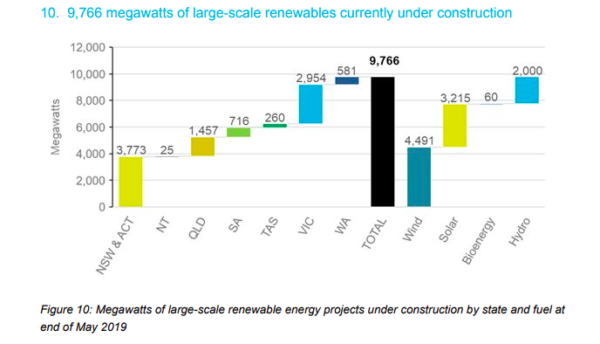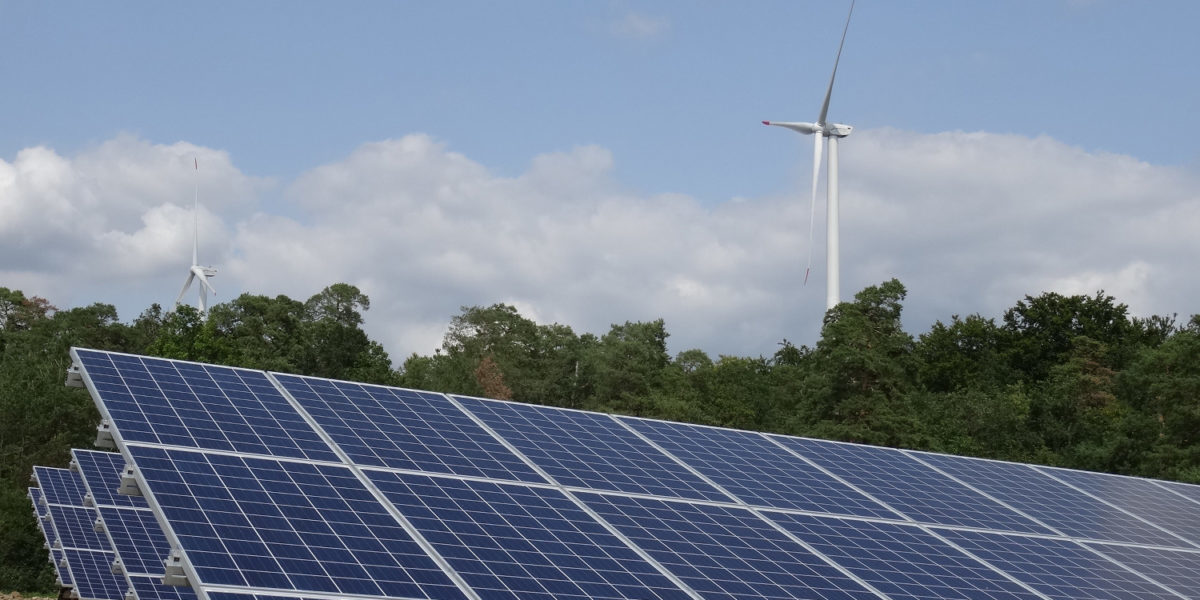Climate responsibility is on the shoulders of Australian states, but some are tracking well behind their renewable energy targets. In the latest edition of its Renewable Energy Index, Green Energy Markets (GEM) finds New South Wales (NSW) and Queensland are lagging far behind their renewable energy commitments, while Victoria, South Australia and Tasmania are on track to meet their climate goals.
With no plans to replace the Renewable Energy Target (RET) “with anything“ when it expires in 2020 and following the last year’s failed attempt at national energy policy – the National Energy Guarantee, the Morrison government has presented no policy to decarbonize the electricity sector. Worryingly for solar, there is nothing to bolster the recent renewables boom in Australia, which has been particularly pronounced in the large-scale solar sector. Hence, states’ climate efforts have been thrust into the limelight.
Leaders
GEM’s review of the National Electricity Market – Australia’s main grid covering the eastern and southeastern states – shows mixed results. Victoria is doing pretty well. It is already already close to achieving its target of 40% of Victorian power generation coming from renewables by 2025 and within striking distance of their 2030 target for 50% renewables. To achieve the 2030 target, GEM finds the state requires about 2,000 MW of further projects or only a further two renewable energy auctions similar in scale to the one it concluded in 2018 (928 MW).
“Assuming its remaining brown coal generation remains at historical levels, Victoria would re-emerge as a major power exporter under such a scenario,” the report states, noting Victoria defines its target in terms of generation, not consumption.
Another front runner is South Australia. The state is on track to generating renewable energy equal to 73.5% of its consumption by 2030, up from 53% in 2018. To achieve the government’s target of 100% renewables it roughly needs another 1,300 MW of capacity, the report finds.
Noting that it was close to generating 100% renewables as a proportion of consumption well before the government announced its target, GEM states Tasmania needs no further projects to achieve its target of 100% renewables by 2022.
Laggards
However, NSW looks set to fall short of its climate goal. Australia’s most populous state does not have a renewable energy target, but it has set itself the goal of achieving zero net emissions from its power sector by 2050.
According to GEM, it requires close to an additional 5,000 MW of new renewable energy project commitments by 2030 to bridge the gap. Namely, NSW would need renewables to grow to around 46% of its overall electricity consumption by 2030, but is currently on track to 28% based on expected rooftop solar growth and committed and contracted wind and solar farms.
Queensland is also significantly short of its target for 50% renewables by 2030 with current commitments and rooftop solar growth to deliver 29.2%, GEM finds. “Even after taking into account the initiatives of the Government’s CleanCo, the state requires around another 4,500 MW of projects,” the report states.
Growing pipeline & job bonanza
Although they are tracking behind their targets, NSW and Queensland are one of the hottest markets for large-scale renewables construction activity. More than 3,700 MW of new capacity is now under construction in NSW, followed by Victoria (2,954 MW) and Queensland (1,457 MW).

With nearly 10 GW of large-scale renewables under construction, including 3.2 GW of solar, there is enough work to employ nearly 22,000 people, GEM finds. An additional 8,580 people are employed in the rooftop solar sector. However, the states’ targets hold the potential for even greater job creation. According to GEM, if all these states ensured enough new projects were built to achieve their targets it would generate 32,000 job-years of construction employment.
This content is protected by copyright and may not be reused. If you want to cooperate with us and would like to reuse some of our content, please contact: editors@pv-magazine.com.









By submitting this form you agree to pv magazine using your data for the purposes of publishing your comment.
Your personal data will only be disclosed or otherwise transmitted to third parties for the purposes of spam filtering or if this is necessary for technical maintenance of the website. Any other transfer to third parties will not take place unless this is justified on the basis of applicable data protection regulations or if pv magazine is legally obliged to do so.
You may revoke this consent at any time with effect for the future, in which case your personal data will be deleted immediately. Otherwise, your data will be deleted if pv magazine has processed your request or the purpose of data storage is fulfilled.
Further information on data privacy can be found in our Data Protection Policy.